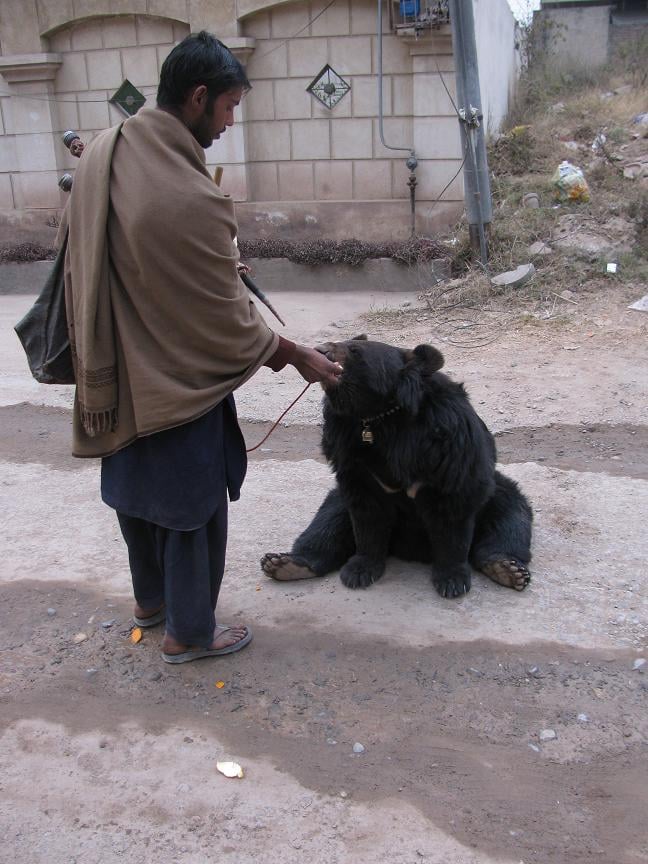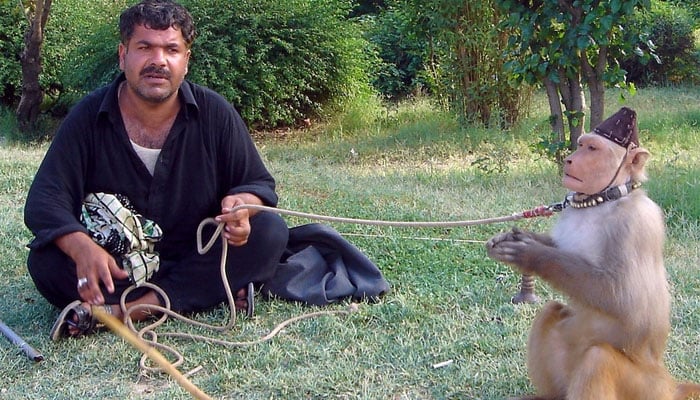The case against animal dancing in Pakistan
Unfortunately, the delighted bystanders are often unaware of the abuse that these animals have to face. What the crowd presumes to be ‘dancing’ is actually a result of years of torture.
The sight of dancing animals draws large crowds all over Pakistan. The spectators cheer and clap as wild animals are forced to act and dance for them. Once the spectacle is over, the animals collect a meager amount of money from their audience and hand it over to their masters.
Unfortunately, the delighted bystanders are often unaware of the abuse that these animals have to face. What the crowd presumes to be ‘dancing’ is actually a result of years of torture.
The cycle begins right after the animals are poached from the wild. A coarse rope is passed through the muzzle of the bear; the rope is then tugged to produce a dance to entertain spectators. Even though trainers find monkeys easier to tame, these feeble animals are also exposed to inhumane torture after they are captured from forests. When the monkeys are just a few months old, their teeth and genitals are removed to ensure that they are incapable of attacking the trainers. The wounds usually heal within a few months, but the animals are scarred for life.
Bear baiting was banned in Pakistan in 1980 by the Prevention of Cruelty to Animals Act; consequently, the incidents of poaching reduced drastically. However, sloth bears are still being poached from the wild to feed the animal entertainment industry. As of now, abusing wild animals for the sake of entertainment is not a criminal offence in Pakistan. This loophole is being outrageously abused as thousands of nomadic families rely solely on wild animals such as bears and monkeys to earn their livelihood. The practice of bear dancing continues to prevail in predominantly rural regions, however, in the urbanized areas relatively docile wild animals like monkeys are frequently found performing tricks and dancing to entertain the audience.
Recently, a campaign which goes by the name of Are You Not Entertained? Talked about the plight of wild animals used for the sake of entertainment. Apart from raising awareness about the turmoil that these wild animals face, people are being motivated to take the pledge to discourage the heinous practice of forcing wild animals to dance.
Wild animals are not actors or dancers who have the ability to dance to different tunes. Yet thousands of wild animals are forced to perform senseless tricks under the threat of physical punishment. These animals are separated from their families and live their entire lives in captivity —all for the sake of human entertainment.
-
Security forces gun down 30 terrorists in multiple IBOs in KP: ISPR
-
MQM-P calls for new province in Sindh
-
US report validates Pakistan military edge over India: PM
-
Banned TTP poses serious threat to Pakistan security: UNSC panel
-
CM Afridi clarifies remarks on by-poll after ECP requests army deployment
-
Dubai sees 3.2m Pakistani passengers in 2025 as airport sets new milestone
-
Security forces kill 23 Indian proxy terrorists in KP's Kurram
-
Pakistan to construct island to boost oil exploration: report













